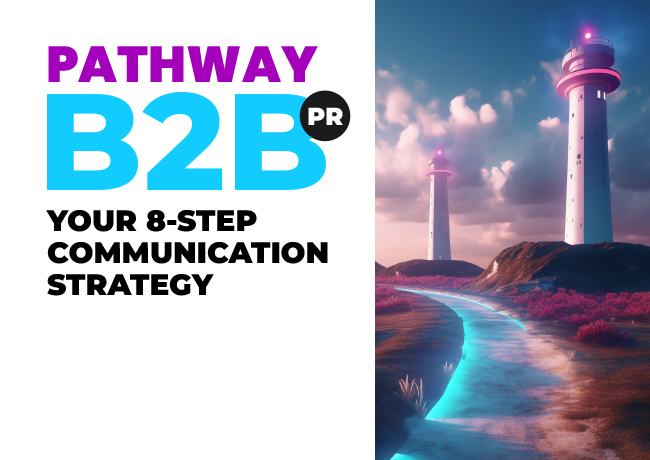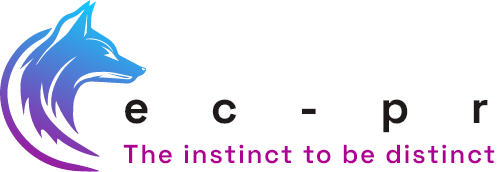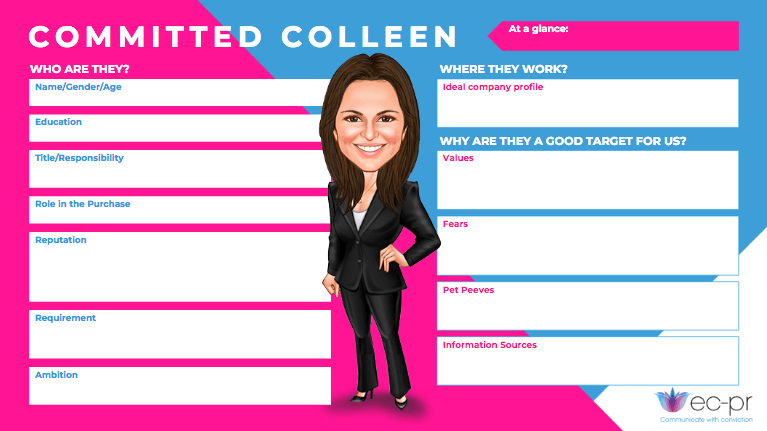
How to create and use target personas in marketing communications
Why target personas are an essential marketing tool
If your marketing messages aren’t landing — or your audience seems disengaged — the issue might not be what you’re saying, but whom you’re speaking to.
Target personas help you reach and satisfy your ideal audience. You need to know who your customers are and which media channels they use. By understanding your customers on a deeper level: their pain points, ambitions, buying behaviours, and decision-making process; you will strengthen and direct your messages to the right places for greatest impact and ongoing audience engagement.
What are target personas?
Target personas (also known as buyer personas) are fictional profiles created using real-world insights about your customers. They help marketing and PR teams deliver relevant, timely, and effective communication that aligns with customer needs throughout the buying journey.
Creating target personas is a way of capturing common customer motivations, worries and behaviours into ‘personality’ that you can then refer to when developing marketing commnications.
In this expert guide, you'll discover
- What do target personas look like in B2B marketing?
- 5 steps to create and use target personas
- Key questions to build your B2B personas
- A target persona template
- How to ensure target personas are used effectively throughout the company
- How to use target personas strategically to devise marketing and PR campaigns
- How often to update personas
- A target persona example
- Do you really need personas?
- How many personas your should create?
What do target personas look like in B2B marketing?
Audience profiles or target personas look like fictional representations of your customers – you can even give them names and visual identity. These are built using research, interviews, and behavioural insights. Each persona captures key characteristics such as goals, challenges, values, preferred communication channels, and buying triggers.
By grouping common behaviours and motivations, personas allow you to:
- Visualise the people you’re trying to reach
- Tailor messaging to different customer types
- Create content that resonates at every stage of the sales funnel
- Align your communication with marketing and business goals
5 steps to create and use target personas
Ask your potential buyers and known customers some key questions
To start developing effective personas, you need insights. This often begins with interviewing current customers or prospective buyers. If you are struggling to find potential buyers or willing customers to quiz in this way, then talk to the people in your business who know them best – try business development and customer success teams.
Here are some useful questions to ask:
- What is your job title and key responsibilities?
- Where do you go for professional insight? (i.e. LinkedIn, trade media etc)
- What are your concerns? What keeps you awake at night?
- What are the key capabilities or expertise you are looking for in a supplier/service?
Another approach is to use LinkedIn creatively, try a poll, a ‘curious question’, or comment on another piece of media and ask your audience for their thoughts.
2Develop a target persona template
The information gathered in step 1 informs the development of typical persona template, which may look like this:
Ensure target personas are used effectively throughout the company
Personas should be a living and breathing concept, not a document to be produced and filed away. Individual personas must have a degree of longevity and flexibility.
Personas should be updated over time, or new personas created, in line with your evolving business strategy and changing market dynamics.
Target personas will definitely be used in marketing and PR, but different business teams ought to be familiar with your set of target personas too! Product or service development, business development and customer service teams will all benefit from understanding your business’ target personas, to help meet their needs more effectively. In our experience, it is particularly important that personas, along with key messages, are socialised within the company to ensure that teams internalise them and refer to them to guide their content and messages on a day-to-day basis.
4Use target personas strategically and to devise marketing and PR campaigns
On a strategic level, personas are an important tool to ensure your communication is targeted and relevant to your key target audiences. Personas also help align your communication efforts with sales by tailoring messaging to specific stages of the buying process.
On a more tactical level, personas support your campaign planning by helping determine what type of message, content and format should be served throughout the customer journey to achieve maximum commercial results.
To find out more about how we create and use target personas please see our Communication Strategy Development service and free guide.
5 Keep personas up to date
Market dynamics shift quickly, and so do customer expectations. Make it a habit to:
- Review your personas annually
- Update them based on feedback, new research or campaign results
- Retire outdated personas that no longer reflect your target customers
Target persona example
Here’s a simplified example of a B2B persona:
- Name: Operations Olivia
- Role: Head of Operations at a mid-sized manufacturing firm
- Pain Points: Supply chain delays, sustainability targets, pressure to reduce costs
- Goals: Improve operational efficiency, source reliable partners
- Preferred Channels: LinkedIn, trade publications, industry webinars
- Buying Triggers: Proven ROI, peer recommendations, case studies
Frequently Asked Questions
Do I really need personas?
You really do. Without personas, your communication will be impersonal, completely untargeted and therefore ineffective. Personas guide the development of your key messages. They ensure you are targeting the right people with messages that are compelling and tailored to the specific stage of the buying cycle they’re currently at. They reduce waste and promote marketing/sales collaboration.
How many personas should I create?
Most companies start with 2–5 core personas. Enough to represent your key customer segments, but not so many that messaging becomes diluted.
Which teams should we share our target personas with?
The marketing team should develop, validate and share personas with:
- Business Development / Sales Teams
- Customer Services or Customer Success Teams
- Product and Service Development Teams
- PR and Communications
- And ideally, a director who is sponsoring the activity from Senior Leadership.
Personas aren’t just for marketing
To reiterate, while personas are most commonly used in marketing and PR, their value extends across your organisation. From product development to customer service, understanding your audience better empowers every team to make smarter, more customer-centric decisions.
Personas are integral to campaign planning as they ensure that at every stage of the journey, customers receive an appropriate type of message that nudges them to the next stage of the buying process.

Your 8-Step Communication Strategy Guide
A comprehensive guide to delivering your business goals using intelligent and relevant messaging.
Subscribe to our updates
Stay up to date with the latest insights, case studies and PR guides.


